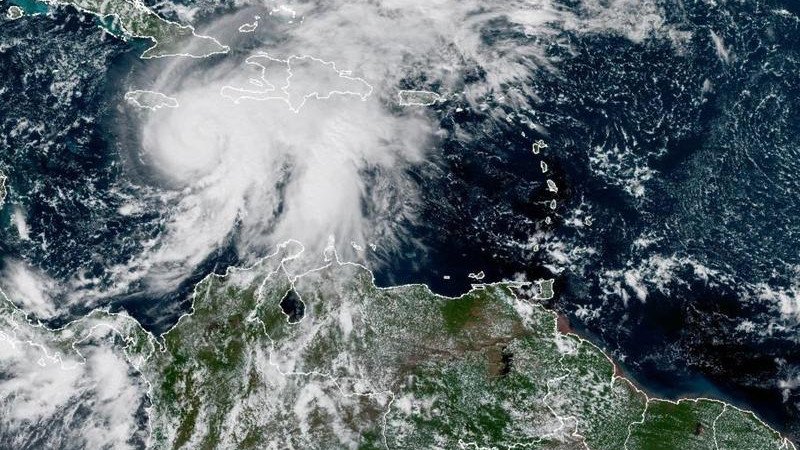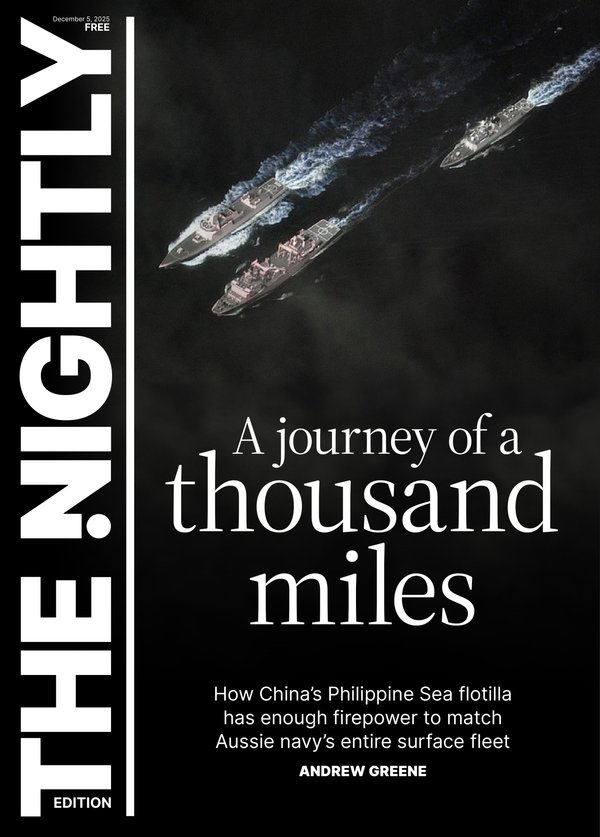Hurricane Melissa: Why category 4 and 5 hurricane landfalls are among the rarest weather events on Earth

Hurricane Melissa is expected to crash into Jamaica with a strength reserved for a tiny percentage of Atlantic hurricanes.
A hurricane reaching Category 4 or 5 strength is quite a feat in itself.
The two categories combined make up about 17 per cent of all hurricanes in recorded history. Those reaching Category 5 - like Melissa - historically make up more like 4 per cent of hurricanes.
Sign up to The Nightly's newsletters.
Get the first look at the digital newspaper, curated daily stories and breaking headlines delivered to your inbox.
By continuing you agree to our Terms and Privacy Policy.And fewer than half of the strongest two categories of hurricanes go on to hit land at such intensity.
Even in a sultry Caribbean Sea known for major hurricanes, none as strong as Melissa have hit Jamaica in a record dating to the 1850s.
With sustained winds of 175 mph and a powerful central pressure of 906 millibars - among the 11 lowest on record - Melissa will go down as not only Jamaica’s strongest hurricane but among the most powerful of all time and part of an ultrarare trio in 2025.
Close calls for Jamaican landfall
A named storm passes within 60 miles of Jamaica during most years. Despite being in a rather active region for tropical activity, the country has experienced no landfalls greater than Category 3 in the modern record.
Hurricane Charlie in 1951 is considered the worst natural disaster for the country during modern times. More than 150 people died in the storm, which left nearly 10,000 displaced while destroying villages and causing widespread landslides.
Hurricane Gilbert in 1988 is thought to have had somewhat stronger winds, striking southwest of Kingston in September 1988 with sustained 125 mph winds, after having been a Category 4 just offshore.
There are more recent examples of close calls with Category 4s travelling just south. They include five storms since 2004, such as Ivan that year, Dean in 2007 and Beryl just last year.
Where Category 4+ hurricanes have struck the most
Only 81 hurricanes have struck as Category 4 or higher since 1851, or about one every other year on average. A couple have crippled multiple points at that strength.
Irma, in 2017, managed to hit five countries as a Category 4 or 5 - the most of any storm in the Atlantic.
It is more common for just one strike at that intensity, which is certainly enough to leave a lasting mark.
Jamaica will join a list of nearly two dozen countries to have been hit by these beasts.
Florida, Cuba and the Bahamas lead the way with 15 strikes, 14 strikes and 13 strikes, respectively. Jamaica is a small target, particularly in the context of the typical east-to-west direction of storms. But it is still perhaps notable that every nearby country has seen three or more strikes from Category 4 or 5 storms.
Cuba is often targeted because of its length, although a majority of the big storms target the west, often swinging close to Jamaica in the process.
The most favoured zones for these monster storms run in a line just north of the Greater Antilles and then another near the Yucatan channel between Cuba and Mexico. Jamaica is on the western edge of the latter super hurricane highway.
Some examples of Category 4 or 5 landfalls - and what happened
During a hurricane outbreak in the northern Caribbean region to the southeast United States in 2017, there were several examples of what a Category 4 of 5 landfall can do.
Take Dominica, another small but highly vulnerable target.
It was hit by a Category 5 Hurricane Maria, which later hit and devastated Puerto Rico as a Category 4. The winds were so strong, they stripped the leaves off trees that were not downed. The same winds toppled houses, and other homes were destroyed by massive storm surge.
Similar scenes were observed in the US Virgin Islands that year with Irma.
Melissa is expected to deliver an enormous inland risk of flooding and landslides. The island ranges from substantially hilly to legitimately mountainous. In the east, elevations rise as high as 7,400 feet above sea level.
Even weak storms can cause tremendous ruin from torrential rainfall.
A year for Category 5s
Melissa reached Category 5 by Monday morning, with winds sustained at least as high as 165 mph.
In the process, it became the third Category 5 of the year, which is the second most in one season on record, behind only the infamous 2005 that included Katrina and its devastating hit on New Orleans.
Before Melissa, Erin reached 160 mph in late August, and Humberto reached 160 mph about a month ago. Both of them managed to make land in their powerful tropical states.
A running tally of 10 years of storms puts 2025 easily well above the pack. With 13 since 2016, it easily surpasses the previous 10-year sum of nine, ending in 2007.
Thanks in part to climate change, Melissa fits a pattern of more intense hurricanes in recent history compared with the past.
The reasons are several, but key among them are warmer water and what may be a lean toward La Niña climate pattern conditions, wherein cool water in the Pacific helps lessen disruptive wind shear over much of the Atlantic.
The warmer water is fairly self-explanatory, given it is a source of life for these heat engines. Even with slight cooling in 2025 compared with record levels of the past several years, water temperatures have run consistently above normal in the Atlantic and particularly so in the region Melissa fed off of.
And with another La Niña developing, odds might end up favouring more mega storms in 2026.
